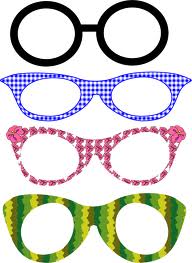This article by Cindy Cesares in the Texas Observer, explains in plain language what racism looks like in our public school system. The issues she highlights are not unique to the state of Texas. You can simply insert “your state” in place of Texas:
Let’s see if we can solve the mystery of why kids of color do worse in school. First off, let’s look at their home life. As people of color, these kids’ parents are subjected to a higher unemployment rate than their Anglo counterparts. According to the Economic Policy Institute, the unemployment rate for whites in Texas is at roughly 6.5 percent. For Latinos it’s 9 percent and for African-Americans it’s a whopping 15.5 percent. Texas Hispanics not only make less money on average than Anglos, they make less money than Hispanics living in other states, according to a report published by the Federal Reserve Bank of Dallas. As this year’s redistricting debacle has taught us, minorities in Texas have been historically discriminated against in the political process and still have to fight just to gain fair representation in government. And people of color also have a higher chance of being targeted by police as was reported in the landmark 2004 study “Racial Profiling: Texas traffic stops and searches,” which was the nation’s largest survey on racial profiling. Six out of every seven law enforcement agencies in Texas reported searching blacks and Latinos at higher rates than Anglos despite those searches turning up nothing 98 percent of the time.
Here are my own observations. For the seven years I’ve lived in my town, I have looked each time I see local police stopping vehicles in traffic. In every case the driver was a person with brown skin. My observations aren’t statistically significant in themselves — but they sure tell me something about racial profiling in my own town.
Furthermore, the actual statistics speak for themselves. She writes,
Not surprising to anyone who studies the data. Consistently, people of color are given the proverbial shaft.
- Poor and minority students in Texas are far less likely than others to have certified math teachers.
- 58 percent of Algebra I teachers in predominantly African-American schools are certified in math, compared to 82 percent of the teachers in schools with the fewest African-American students.
- Of the state’s ?50 largest school districts, 43 have the highest concentration of novice teachers in the poorest schools.
- Across Texas, at every school level and in all? core subjects (English, math, science and social studies), Hispanic, African-American and lowincome students are more likely than their more affluent and white peers to be taught by teachers who do not meet state requirements.
- A similar analysis of teacher and student data in Los Angeles concluded that “having a top- quartile teacher rather than bottom-quartile teacher four years in a row would be enough to close the black-white test score gap.”
- In Arlington, for example, the average teacher salary in the district’s highest-poverty middle schools is $4,750 less than the average teacher salary in the more-affluent middle schools.
- In Amarillo, teachers working in elementary schools serving mostly Hispanic and African-American children earn on average $2,405 less than those in the elementary schools serving greater numbers of white students.
People who question the existence of systemic racism need only look at the numbers. Take the emotion out and see for yourself. The statistics are quite simply stacked against people of color in this state.
Finally, consider that in most cases we pay for public schools with property taxes. Higher income suburbs, more property taxes, better schools. It isn’t rocket science.
For those of us who benefit, our children are not “blessed with good schools.” No. The system is designed to give some of us a better education, thus better access to high-paying jobs, better access to health insurance, better access to wealth. The system is designed to be unequal.
You may also like “Wealth Distribution Thought Problem” and “Wealth Transfers.”




